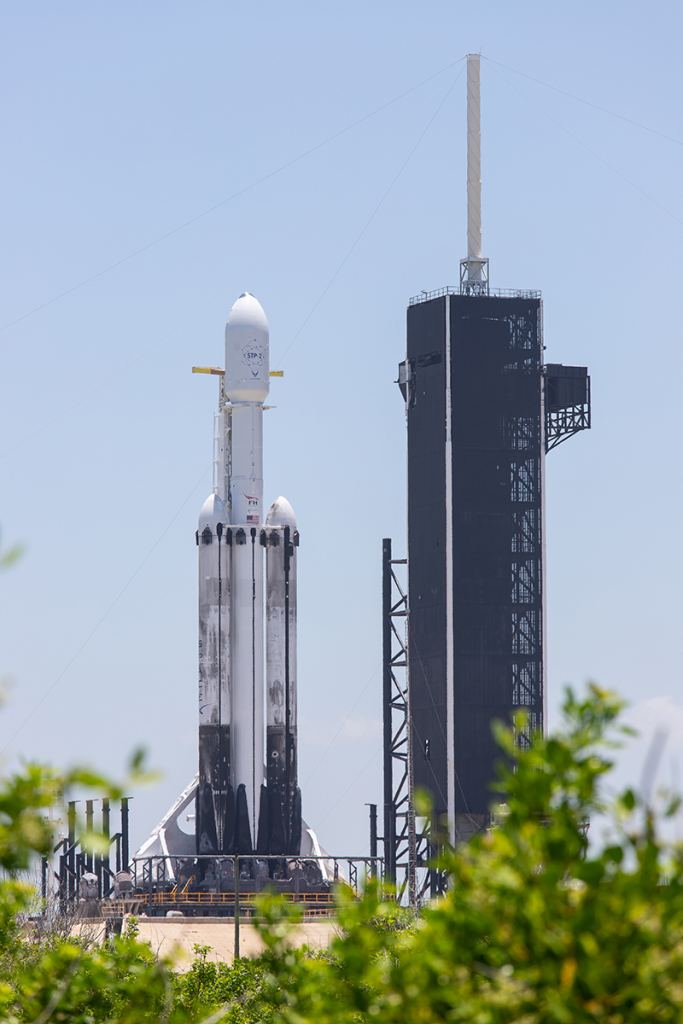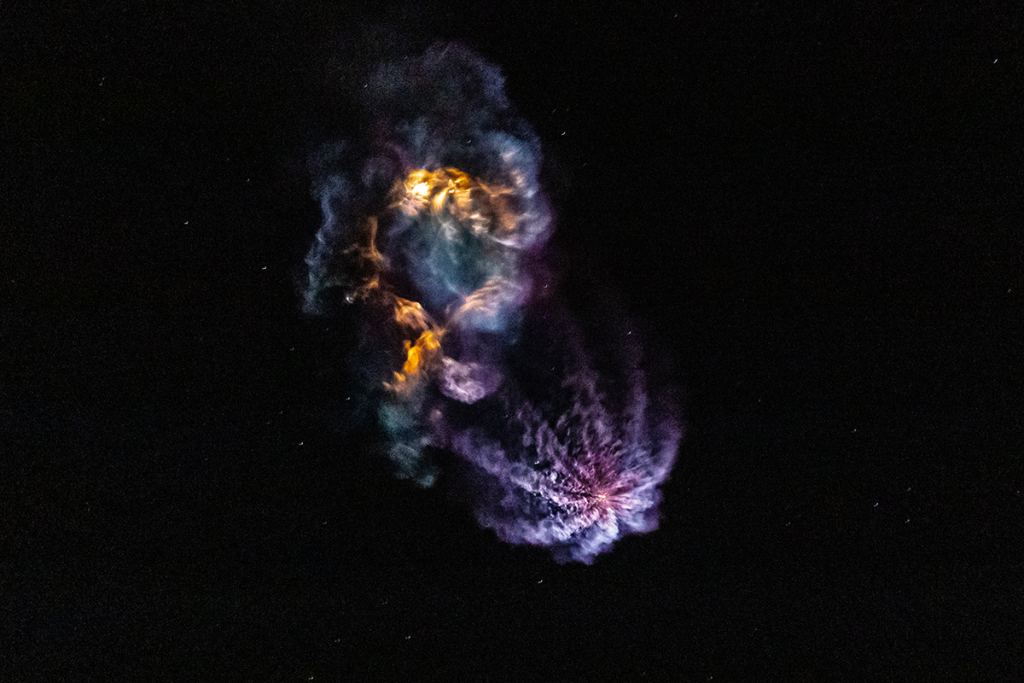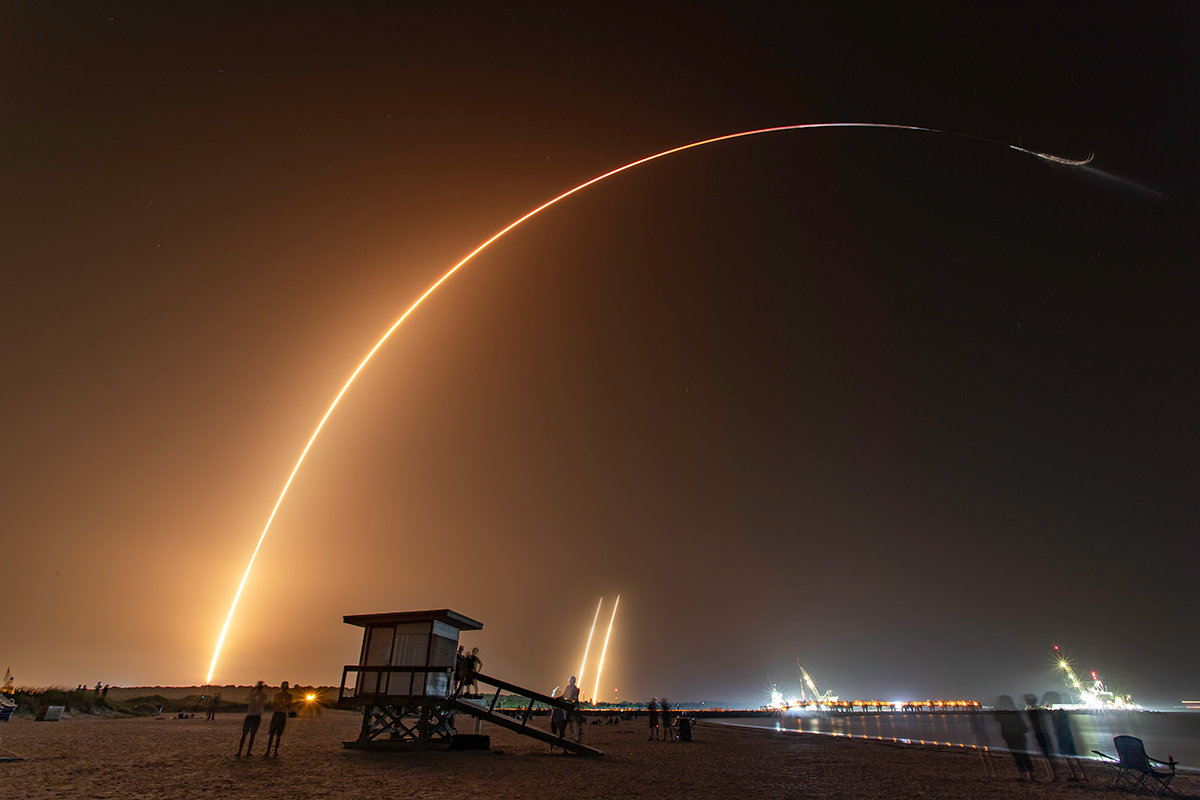In what Elon Musk is calling their “most difficult” mission so far, SpaceX launched the Falcon Heavy rocket for the third time. The launch took place at 2:30 am ET Tuesday from a launch pad at Kennedy Space Center in Florida. The mission was called STP-2, and Universe Today sent a photographer to capture all the action.
This mission was a first for SpaceX in a few ways. The company keeps tweaking its missions to make them better and to make launches more affordable. Not only was STP-2 SpaceX’s first night-time launch, but it was the first time that it reused flight-proven boosters. While this was the first flight for the central booster, the other two boosters were previously used on the Arabsat-6A mission on April 11th.
Things didn’t go perfectly for SpaceX. While the two side-boosters landed successfully at SpaceX’s landing zones at Cape Canaveral Air Force Base, the main booster crashed into the ocean and was destroyed on impact. But due to the complicated mission profile for STP-2, the main booster was travelling very quickly, and that led to problems.
STP-2 had a very interesting payload, featuring some important customers for SpaceX. The Department of Defense, NASA, and the US Air Force all had payloads on board. Among the payloads was the Planetary Society’s LightSail 2, and NASA’s Deep Space Atomic Clock.
The mission featured 24 different payloads on 3 different spacecraft, including the Orbital Test Bed, and getting all three to their orbits meant that the mission required three different burns and three different deployment points. This was easily the most complicated mission profile for SpaceX.

Alex Brock
Instagram: @alexhbrock
Website: www.alexhbrock.com
Rocket launches are always cool. But the Falcon Heavy is currently the world’s most powerful rocket. And a night-time launch meant that in terms of viewing gratification alone, STP-2 was a stunner. Universe Today dispatched photographer Alex Brock to the launch and he captured these images for us.
Particularly stunning is Alex’s image of the so-called “Falcon Nebula.” Alex explained what he thinks caused such a stunning display in the night sky:
“This image occurred at booster separation and boostback-burn startup. The cloud with the purple/yellow glow in it is the 2 boosters firing up their engines to slow their forward momentum and begin their burn back towards the landing zones at the cape. The center core stage is on the bottom right side and is shown still on its main burn propelling the second stage for about another minute. The reason you get these incredible visuals is, from my understanding, at that altitude there is very little atmosphere so the exhaust clouds from the boosters expand much larger and contrast against the dark night sky.”

Instagram: @alexhbrock
Website: www.alexhbrock.com
SpaceX also tried to catch the nosecone fairings from STP-2. They used a barge called Ms. Tree, outfitted with a huge suspended net, to try and catch the two-piece fairing. After previous failed attempts, they used a large net and were partially successful. While one of the pieces crashed into the ocean, Ms. Tree did catch the other piece.
It’s a $6 million dollar bill every time one of these fairings is destroyed, so SpaceX is keen to figure out how to re-use them. The fairings have small rockets to control their descent, as well as parachutes. This is the first time they’ve managed to catch even one half of the nose-cone fairing, so now they’ll examine it to see if it can be refurbished and re-used.
The next Falcon Heavy launch is not scheduled yet, but according to the SpaceX Launch Manifest, the customer is Inmarsat. Inmarsat is a world leader in satellite communications. It will also launch from Pad 39-A at the Kennedy Space Center.
It’ll be interesting to see if SpaceX is able to recover and reuse all of its boosters, as well as its nosecone fairings.


According to the comments during the live transmission, SpaceX did not intend to catch both halves with the ship net, just one. The other half was recovered from the water.